Growing Red Dragon Fruit at Home might seem like an exotic dream reserved for tropical climates, but I’m here to tell you it’s more achievable than you think! Forget those expensive grocery store prices – imagine plucking your own vibrant, sweet dragon fruit straight from your backyard.
Dragon fruit, also known as pitaya, has a rich history rooted in Central and South America, where it was a staple food for centuries. Its popularity has since exploded globally, prized not only for its unique flavor and striking appearance but also for its numerous health benefits. But why rely on imported fruit when you can cultivate your own little slice of the tropics?
In this DIY guide, I’ll walk you through simple, yet effective tricks and hacks to successfully grow red dragon fruit at home, regardless of your climate. We’ll cover everything from selecting the right variety and preparing the perfect soil to providing essential support and protecting your precious plants from pests and diseases.
Why do you need this DIY guide? Because growing red dragon fruit at home is not only rewarding but also a sustainable way to enjoy this delicious and nutritious fruit. Plus, it’s a fantastic conversation starter! So, grab your gardening gloves, and let’s embark on this exciting journey together. I promise, with a little patience and these insider tips, you’ll be harvesting your own dragon fruit in no time!
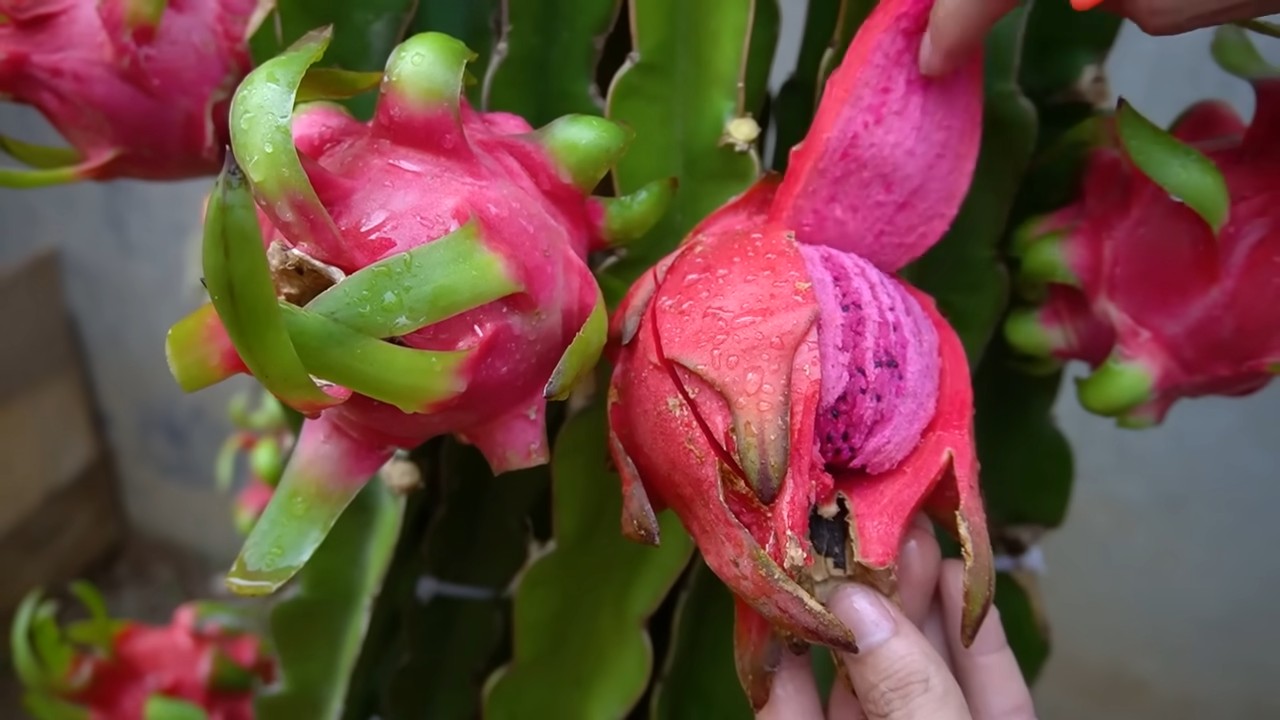
Growing Red Dragon Fruit at Home: A DIY Guide
Okay, so you want to grow your own Red Dragon Fruit? Awesome! It’s totally doable, even if you don’t have a huge garden. I’ve been growing mine for a few years now, and let me tell you, there’s nothing quite like harvesting your own exotic fruit. It might seem intimidating at first, but trust me, with a little patience and the right know-how, you’ll be enjoying delicious dragon fruit in no time. This guide will walk you through everything you need to know.
Choosing the Right Variety and Getting Started
Before we dive into the nitty-gritty, let’s talk about choosing the right variety. While all dragon fruit are beautiful and tasty, some are better suited for home growing than others.
* Self-pollinating vs. Cross-pollinating: This is crucial! Some dragon fruit varieties need pollen from a different variety to produce fruit. For beginners, I highly recommend choosing a self-pollinating variety. This means it can pollinate itself, making your life much easier. Some popular self-pollinating varieties include ‘Haley’s Comet,’ ‘Physical Graffiti,’ and ‘Dark Star.’ Do your research and see what’s available in your area.
* Climate Considerations: Dragon fruit thrives in warm climates (USDA zones 9-11). If you live in a colder area, don’t worry! You can still grow it in a container and bring it indoors during the winter.
* Where to Get Your Cutting: You can buy dragon fruit cuttings online, from nurseries, or even from a friend who already grows them. Make sure the cutting is healthy, about 12-18 inches long, and has a few nodes (the little bumps where roots will emerge).
Preparing Your Cutting for Planting
Alright, you’ve got your cutting! Now, let’s get it ready for planting. This is a crucial step to ensure it roots properly.
1. Callousing the Cutting: This is super important! Before planting, you need to let the cut end of the cutting callous over. This prevents rot. Simply place the cutting in a dry, shaded area for about 1-2 weeks. You’ll notice the cut end will dry out and form a protective layer.
2. Choosing the Right Pot (if growing in a container): If you’re growing in a container (which is great for beginners!), choose a pot that’s at least 15-20 gallons. Dragon fruit roots need room to grow. Make sure the pot has drainage holes!
3. Selecting the Right Soil: Dragon fruit needs well-draining soil. A cactus or succulent mix works perfectly. You can also make your own by mixing equal parts potting soil, perlite, and coarse sand.
Planting Your Dragon Fruit
Okay, the exciting part! Let’s get that cutting in the ground (or pot!).
1. Filling the Pot: Fill your pot with the well-draining soil mix, leaving a few inches of space at the top.
2. Planting the Cutting: Plant the calloused end of the cutting about 2-3 inches deep in the soil.
3. Watering: Water the cutting thoroughly after planting. Don’t overwater! Dragon fruit doesn’t like soggy soil.
4. Providing Support: Dragon fruit is a climbing cactus, so it needs support. A sturdy trellis, post, or even a strong tomato cage will work. Place the support structure near the cutting. As the plant grows, you’ll need to tie it to the support.
Caring for Your Dragon Fruit Plant
Now that your dragon fruit is planted, it’s time to give it the TLC it needs to thrive.
* Sunlight: Dragon fruit loves sunlight! Aim for at least 6-8 hours of direct sunlight per day. If you’re growing it indoors, place it near a sunny window or use a grow light.
* Watering: Water deeply when the soil is dry to the touch. During the growing season (spring and summer), you’ll need to water more frequently. Reduce watering during the dormant season (fall and winter). Remember, overwatering is a dragon fruit’s worst enemy!
* Fertilizing: Feed your dragon fruit plant with a balanced fertilizer (like 10-10-10) every 1-2 months during the growing season. You can also use a fertilizer specifically formulated for cacti and succulents.
* Pruning: Pruning is important for shaping the plant and encouraging fruit production. Remove any dead or damaged branches. You can also prune to control the size of the plant. The best time to prune is after the plant has finished fruiting.
* Pest Control: Dragon fruit is relatively pest-resistant, but keep an eye out for common pests like aphids and mealybugs. If you spot any pests, you can treat them with insecticidal soap or neem oil.
* Winter Care (for colder climates): If you live in a colder climate, you’ll need to bring your dragon fruit plant indoors during the winter. Place it in a sunny location and reduce watering.
Pollination (If Necessary)
If you’re growing a self-pollinating variety, you’re in luck! You don’t need to worry about pollination. However, if you’re growing a cross-pollinating variety, you’ll need to hand-pollinate the flowers.
1. Identifying the Flower Parts: Dragon fruit flowers are large and beautiful, opening only at night. The male part (stamen) produces pollen, and the female part (pistil) receives the pollen.
2. Collecting Pollen: Use a small brush to collect pollen from the stamen of one flower.
3. Transferring Pollen: Gently transfer the pollen to the pistil of another flower (of a different variety, if cross-pollinating).
4. Timing: The best time to hand-pollinate is at night when the flowers are fully open.
Harvesting Your Dragon Fruit
This is the moment you’ve been waiting for! Harvesting your own dragon fruit is so rewarding.
1. Knowing When to Harvest: Dragon fruit is ready to harvest when the skin turns a bright, even color (usually red or pink, depending on the variety) and the “wings” (the little scales on the fruit) start to dry out. The fruit should also feel slightly soft to the touch.
2. Harvesting the Fruit: Use a sharp knife or pruning shears to cut the fruit from the stem.
3. Enjoying Your Harvest: Dragon fruit is delicious eaten fresh. Simply cut it in half and scoop out the flesh with a spoon. You can also use it in smoothies, salads, or desserts.
Troubleshooting Common Problems
Even with the best care, you might encounter some problems along the way. Here are a few common issues and how to fix them:
* Yellowing Leaves: This could be a sign of overwatering, underwatering, or nutrient deficiency. Check the soil moisture and adjust your watering accordingly. You may also need to fertilize the plant.
* Lack of Fruit: This could be due to a lack of sunlight, improper pollination (if you’re growing a cross-pollinating variety), or nutrient deficiency. Make sure your plant is getting enough sunlight, hand-pollinate if necessary, and fertilize regularly.
* Rotting Stem: This is usually caused by overwatering. Make sure your soil is well-draining and avoid overwatering. If the stem is rotting, you may need to cut off the affected area and replant the healthy part of the cutting.
* Pests: As mentioned earlier, keep an eye out for pests like aphids and mealybugs. Treat them with insecticidal soap or neem oil.
Propagating New Plants
Once you have a thriving dragon fruit plant, you can easily propagate new plants from cuttings. Simply take a cutting from a healthy branch, let it callous over, and plant it in well-draining soil. It’s a great way to expand your dragon fruit collection or share with friends!
Final Thoughts
Growing dragon fruit at home is a fun and rewarding experience. It takes a little patience and effort, but the delicious fruit is well worth it. Don’t be afraid to experiment and learn as you go. Happy growing!
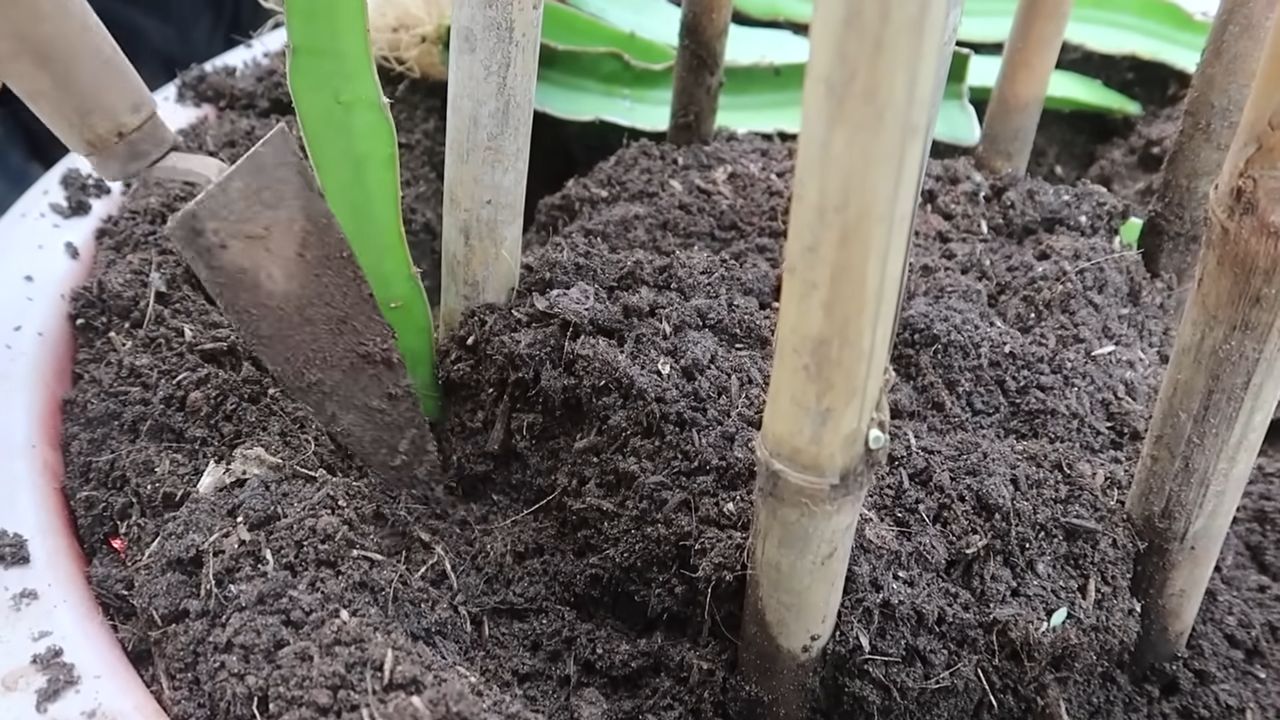
Conclusion
So, there you have it! Growing Red Dragon Fruit at Home is not just a gardening project; it’s an adventure that rewards you with vibrant, exotic fruit right from your own backyard. We’ve walked through the essential steps, from selecting the right cutting to providing the optimal growing conditions. The beauty of this DIY approach lies in its accessibility. You don’t need acres of land or a greenhouse to enjoy the sweet, slightly tangy flavor of homegrown dragon fruit.
This method is a must-try for several reasons. First, it’s incredibly satisfying to nurture a plant from a simple cutting to a fruit-bearing vine. Second, you have complete control over the growing process, ensuring that your dragon fruit is free from harmful pesticides and chemicals. Third, it’s a cost-effective way to enjoy a fruit that can be quite expensive in stores. Finally, and perhaps most importantly, it’s a conversation starter! Imagine the look on your friends’ faces when you tell them you grew your own dragon fruit.
But don’t stop there! Experiment with different variations to personalize your dragon fruit growing experience. Try using different types of support structures, like a sturdy trellis or even an old tree trunk. Consider companion planting with herbs like basil or rosemary to deter pests naturally. You can also explore different soil amendments to see what works best for your local climate and soil conditions. Some gardeners have had success with adding bone meal or compost tea to boost fruit production.
Remember, patience is key. Dragon fruit vines take time to mature and produce fruit, but the wait is well worth it. The vibrant colors of the fruit, the unique texture, and the delicious taste will make all your efforts worthwhile.
We wholeheartedly encourage you to give this DIY trick a try. It’s a rewarding experience that connects you with nature and provides you with a healthy, delicious treat. Once you’ve harvested your first dragon fruit, be sure to share your experience with us! We’d love to hear about your successes, challenges, and any tips you’ve discovered along the way. Post pictures of your dragon fruit vines and your delicious harvests on social media using #HomegrownDragonFruit. Let’s create a community of dragon fruit enthusiasts and inspire others to embark on this exciting gardening journey. Happy growing!
Frequently Asked Questions (FAQ)
1. How long does it take for a dragon fruit cutting to produce fruit?
The time it takes for a dragon fruit cutting to produce fruit can vary depending on several factors, including the variety of dragon fruit, the growing conditions, and the maturity of the cutting. Generally, you can expect to see fruit production within 1-3 years after planting the cutting. Some faster-growing varieties may produce fruit sooner, while others may take longer. Providing optimal growing conditions, such as plenty of sunlight, well-draining soil, and regular watering and fertilization, can help to speed up the process. Remember that patience is key, and consistent care will eventually reward you with delicious dragon fruit.
2. What kind of soil is best for growing dragon fruit?
Dragon fruit thrives in well-draining soil that is rich in organic matter. A slightly acidic to neutral pH (around 6.0 to 7.0) is ideal. A good soil mix for dragon fruit can be created by combining equal parts of potting soil, sand, and compost or well-rotted manure. The sand helps to improve drainage, while the compost provides essential nutrients. Avoid heavy clay soils, as they can retain too much moisture and lead to root rot. You can also amend your soil with perlite or vermiculite to further improve drainage and aeration. Regular soil testing can help you determine if your soil needs any amendments to ensure optimal growth.
3. How often should I water my dragon fruit plant?
Watering frequency for dragon fruit depends on the climate, soil type, and the plant’s stage of growth. Generally, dragon fruit plants need regular watering, especially during the growing season (spring and summer). Water deeply when the top inch of soil feels dry to the touch. Avoid overwatering, as this can lead to root rot. During the dormant season (fall and winter), reduce watering frequency. Dragon fruit plants are relatively drought-tolerant once established, but consistent watering will promote healthy growth and fruit production. Monitor your plant closely and adjust watering accordingly based on the weather conditions and the plant’s needs.
4. What are some common pests and diseases that affect dragon fruit, and how can I prevent them?
Dragon fruit plants are generally resistant to pests and diseases, but they can be susceptible to certain problems under unfavorable conditions. Common pests include aphids, mealybugs, and scale insects. These pests can be controlled with insecticidal soap or neem oil. Diseases such as stem rot and fungal infections can occur in humid environments or with poor drainage. To prevent these problems, ensure good air circulation around the plants, avoid overwatering, and use well-draining soil. Regularly inspect your plants for any signs of pests or diseases and take action promptly. You can also use organic fungicides or bactericides as needed. Maintaining healthy growing conditions is the best way to prevent most pest and disease problems.
5. Can I grow dragon fruit in a container?
Yes, you can absolutely grow dragon fruit in a container, which is a great option for those with limited space or colder climates where the plant needs to be moved indoors during winter. Choose a large container (at least 20 gallons) with good drainage holes. Use a well-draining potting mix as described earlier. Provide a sturdy support structure, such as a trellis or stake, for the vine to climb. Container-grown dragon fruit plants may require more frequent watering and fertilization than those grown in the ground. Place the container in a sunny location that receives at least 6-8 hours of direct sunlight per day. With proper care, you can successfully grow dragon fruit in a container and enjoy a bountiful harvest.
6. How do I know when my dragon fruit is ripe and ready to harvest?
Determining when a dragon fruit is ripe can be tricky, but there are several indicators to look for. The skin of the fruit will change color from bright green to a vibrant red or pink, depending on the variety. The “wings” or bracts on the fruit will start to dry out and turn brown. The fruit should feel slightly soft to the touch, similar to a ripe avocado. You can also gently twist the fruit; if it comes off the vine easily, it’s likely ripe. Taste is the ultimate test – a ripe dragon fruit will have a sweet, slightly tangy flavor. Avoid harvesting the fruit too early, as it will not ripen further off the vine.
7. What are some different varieties of dragon fruit I can grow?
There are numerous varieties of dragon fruit, each with its own unique characteristics. Some popular varieties include:
* **Red Dragon Fruit (Hylocereus costaricensis):** This variety has red skin and red flesh, with a sweet and slightly tangy flavor.
* **White Dragon Fruit (Hylocereus undatus):** This variety has pink skin and white flesh, with a mild and refreshing flavor.
* **Yellow Dragon Fruit (Selenicereus megalanthus):** This variety has yellow skin and white flesh, with a sweet and slightly sour flavor.
* **Pink Dragon Fruit (Hylocereus guatemalensis):** This variety has pink skin and pink flesh, with a sweet and slightly floral flavor.
When choosing a variety, consider your local climate, personal taste preferences, and the availability of cuttings or plants. Some varieties are more cold-hardy or disease-resistant than others.
8. How do I fertilize my dragon fruit plant?
Dragon fruit plants benefit from regular fertilization, especially during the growing season. Use a balanced fertilizer with a ratio of 10-10-10 or 20-20-20. Apply the fertilizer according to the manufacturer’s instructions, typically every 2-4 weeks during the growing season. You can also supplement with organic fertilizers such as compost tea, fish emulsion, or seaweed extract. Avoid over-fertilizing, as this can damage the plant. During the dormant season, reduce or stop fertilizing. Monitor your plant’s growth and adjust fertilization accordingly.
9. Can I grow dragon fruit from seed?
While it is possible to grow dragon fruit from seed, it is not the preferred method. Plants grown from seed can take much longer to produce fruit (5-7 years or more) and may not have the same characteristics as the parent plant. Additionally, the germination rate of dragon fruit seeds can be low. Growing from cuttings is a much faster and more reliable way to propagate dragon fruit. If you do choose to grow from seed, use fresh seeds from a ripe fruit and sow them in a well-draining potting mix. Keep the soil moist and warm, and be patient, as germination can take several weeks.
10. How do I prune my dragon fruit plant?
Pruning is essential for maintaining the shape and productivity of your dragon fruit plant. Prune regularly to remove dead, damaged, or overcrowded branches. You can also prune to encourage branching and promote fruit production. The best time to prune is after the fruiting season. Use clean, sharp pruning shears to make clean cuts. Avoid pruning too heavily, as this can stress the plant. Focus on removing unwanted growth and shaping the plant to allow for good air circulation and sunlight penetration.


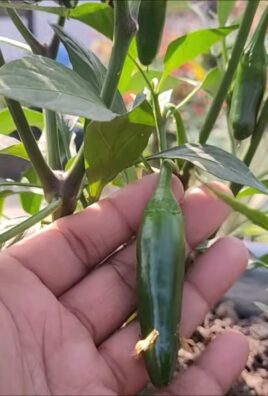
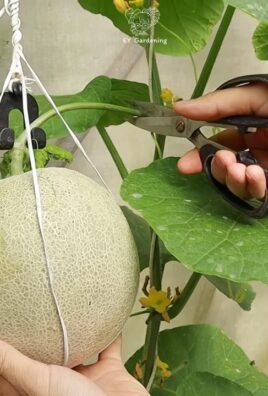
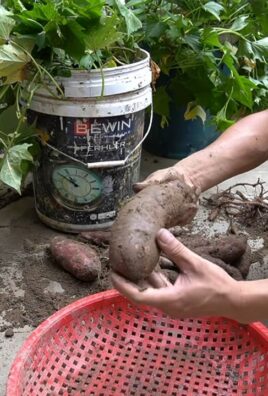
Leave a Comment